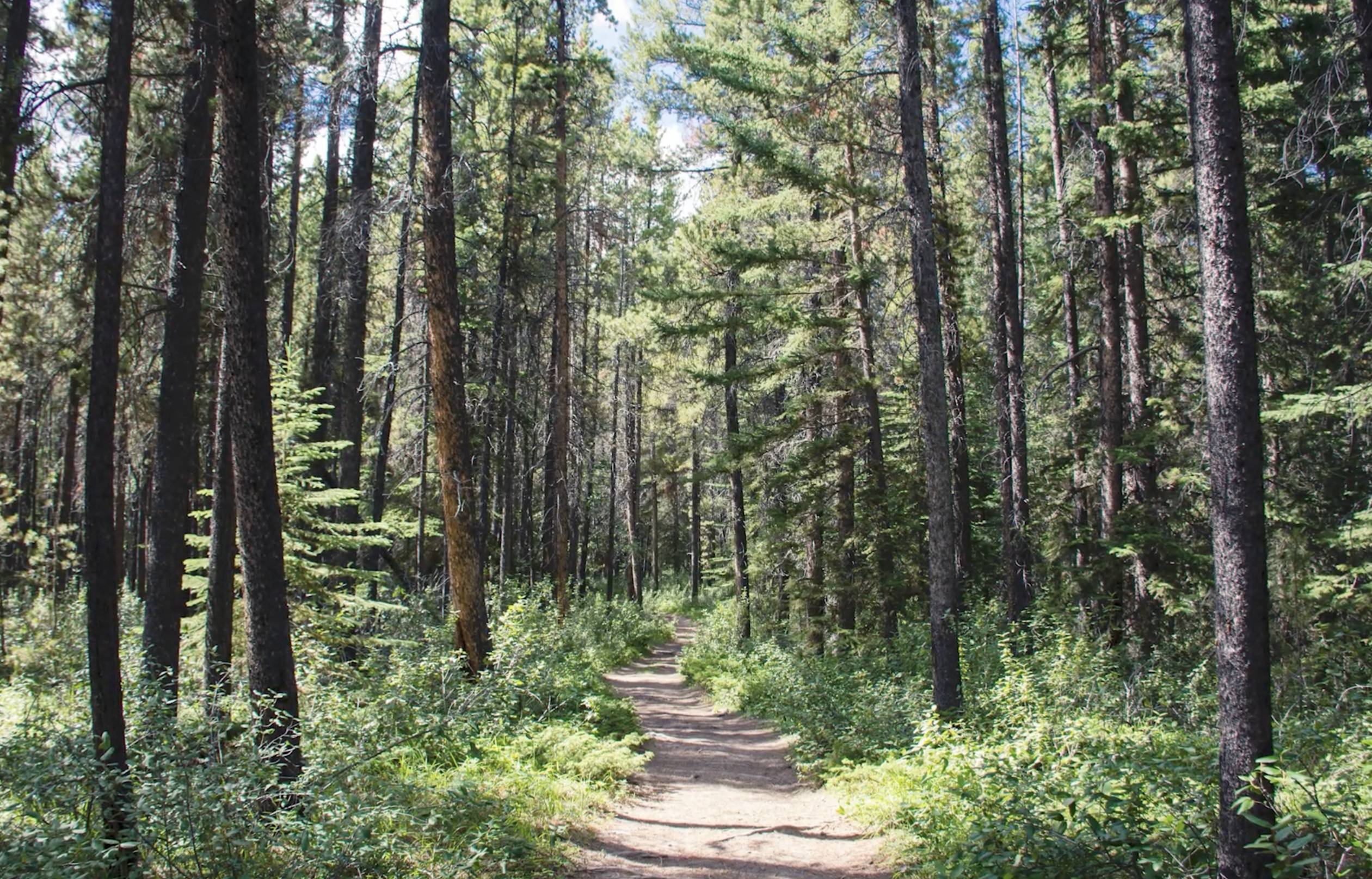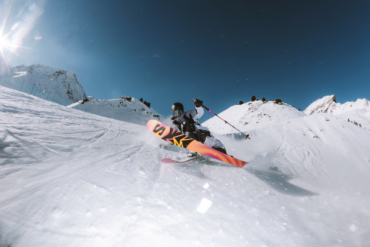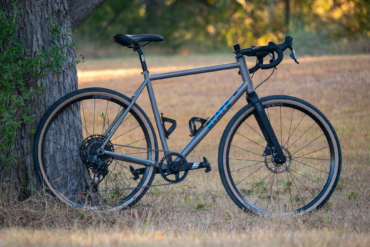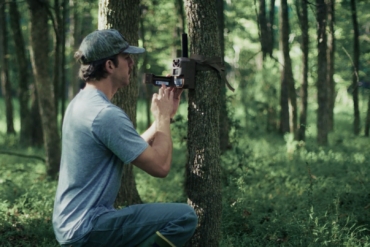The slowest-going movers on trails maintain the right of way. And the more kind, respectful, and generous we can all be, the better it’ll be for every recreational user.
Right-of-way on the mountain seems like it should be common knowledge. Generally, here in Montana, it is. And generally, things go really well.
But, sometimes it gets a little hairy out there. Suffice it to say, the fastest folks on the trail are often the ones others yield to. Unfortunately, this can send mixed messages to uneducated speedsters.
If going fast is a part of your on-trail vocabulary, it is your responsibility to take speed to a low in multiple-use, uncontrolled, low-visibility situations. Common sense reigns, but there are clear-cut hierarchies to help us better get along.
And, with more folks in the mountains than ever, here’s a refresher on trail etiquette, the history of trails, and more on how we can keep each other safe.
In Right-of-Way Situations, Slow Goes

The easiest way to think about this is that the slowest-going on the trail have the right of way. But, we’ll break it down further below.
Horses and Mules — or Stock — Have the Right-of-Way in All Situations
Stock averages about 2 miles per hour in big country, which is much slower than everyone out there for the most part. And beyond horses, stock can include llamas and pack goats (which would also yield to horses, if met on the trail).
Whether stock users are heading uphill or downhill, hikers, bikers, and motor folks are asked to pull off the trail, stop their bikes and motors, and wait until they pass in their entirety to continue on. This is for the safety of the stock and users. Yield to horses on the downhill side, if possible.
Note that training also happens on the trail. It’s difficult to accustom stock to all the things they can encounter on the trail without simply going out there. A human with a big pack on can look real weird to a horse! And a speedy bike coming around a blind turn can interrupt what was a very quiet moment just prior.
Like us, they learn from experience. A good experience with recreators on trail translates to a quieter, safer horse down the line.
From There, Bikers and Motor Users Yield to Hikers
Hikers are slower than those on wheels and therefore, they are to be yielded to in this case. But, hikers can also easily step to the side. This can give some people the wrong idea about who has the right of way, but it’s often the easier solution. Just know they do have right of way if you’re on a human- or motor-powered vehicle.
Bikers should still slow down, and if going downhill, preferably stop for folks hiking by. Some trail networks even offer a clever solution to this on crowded trails by designating biker-only or hiker-only days.
In my time on the trail, dirt bikers have been awesome at sharing the trail, shutting off their motors as they walk their bikes by. ATVers will simply slow down and pull over if possible.
For me, the easier thing about navigating motors is that I can hear them coming. I can always prepare myself and the stock for the encounter as best as I can.
Hikers vs. Hikers: Uphill Users Have Right of Way
What about when same meets same? Uphill users take precedence.
It makes sense. Slow goes, right? Although I personally don’t mind the break from the uphill trudge to let downhill hikers pass, it’s the hiker going up who maintains the right of way.
It also makes sense when you consider that those of us moving uphill, especially on more technical terrain, are working harder. When I head downhill, I always offer the uphill hiker the right of way.
Another trickier rule of etiquette is individuals versus groups. Yes, groups have the right of way. If you’re hiking in a large group, drop into a single-file line while passing others and try to stick to the trail to avoid damaging flora on the trail’s edge.
A Bit of History: Mules, Horses Carried Trail Recreation on Their Backs

A quick education on how trails got here might be helpful for all of us. And as much as our country’s Indigenous lands have become a place for adrenaline-chasing, the concept of “fast” is a new and modern endeavor in wild places.
We have a lot of public land in the U.S. — 640 million acres, give or take. And much of this, if not the great majority, is multiple-use. We share it, communally.
It’s worth noting — if you’re in any sort of mountainous or canyon-like country — that the recreational trails beneath your feet were most likely brought to you by the four-legged, long-eared creatures that you occasionally encounter on the trail.
Horses and mules are responsible for the great majority of trail access in places like national forests and wildernesses. The lumber for backcountry bridges is and was packed in on their backs. They still pack in supplies for trail crews, and they even pack recreators out in dangerous situations like forest fires.
To this day, hundreds of horses and mules work for the U.S. Forest Service. I’m lucky enough to have adopted my own retired forest service mule. She packed more than 18,000 pounds of lumber, explosives, cross-cut saws, resupply gear, and more into Utah’s Ashley National Forest for 21 years. And these days, she’s my old faithful on the trail, a bellwether for my crew.
If you’ve hiked, biked, or packed on trails, you can thank our equine friends for getting there first and carrying the heavy loads that built that trail beneath you.
How to Avoid Potentially Disastrous Encounters (Hint: Slow Down)

Things can go horribly wrong on trail. Close calls are a reminder of this.
Just a few weeks ago, I stepped off-trail on a hike with my dogs to go check out some budding wildflowers. Less than a minute later, two mountain bikers caught big air right where I’d been standing, at head level, at a blind spot coming down a hill. I had my legally off-leash, but under control, border collie and 6-month-old spaniel pup in tow.
The young dudes whooped and hollered over the jump and screamed past at a speed I can’t even describe. There was no way for them to see who was beneath them, on a trail in a neighborhood with families, young children, dogs, and horses.
Luckily, I’d called my dogs over with me. But the situation could have been wildly different had I stayed on trail.
Adrenaline is a gnarly drug, all on its own. I know it and love it when it’s within bounds. A flat-out gallop across a field or bombing down a ski run on a powder day are two of my favorite things.
I can imagine that flying downhill on a mountain bike is a blast. And I’m sure some folks love the technicality of ripping through tight turns to open trail. But, visibility is the key to safety. And there are a lot of us using trails these days.
Sharing truly is caring. And caring looks like treating every blind turn like there’s a three-year-old kid toddling around the corner, or an old dog just trying to slowly keep up.
Caring also takes into account the possibility that you might run into the business end of a horse or mule with metal shoes on their feet. And I don’t ever want to see it happen with my two equine girls, for the sake of everyone involved.
A Plea to Mountain Bikers, From a Multiple-Use Public Lands User

Dear wheeled users — mountain bikers in particular — please share the trails.
If you can see folks ahead of you, slow down. If you can’t see ahead of you, slow down. Literally, anything can be out there.
A few years ago, a Montana mountain biker was killed when he hit a grizzly going 20-25 mph around a blind corner. Others in Montana and Alaska have been seriously injured when encountering cow moose with calves in close proximity.
Hikers, horses, and riders have also been injured by bikers. In these cases, bikers can be criminally charged and liable for injuries, while also chancing severe injury for themselves.
Wearing headphones (we like the rule “one or none”) might be fine for the drudgery of uphill riding, but please take them out when heading downhill in low-visibility conditions like a winding trail or poor weather. I certainly always announce my presence if others are around, and this might not be a bad idea coming around a corner.
And remember this: just because folks step off-trail doesn’t mean you have the right of way. Yielding to speed is a safety response from others, but knowing right of way and using controlled speed is your responsibility.
If speed is your go-to, know that you do have options. Mountain bike parks and downhill biking options at ski resorts continue to gain steam. And mountain bike races can offer some respite from highly utilized areas.
But on multiple-use trails, there are a lot of us out there going slow and loving it. You can, too. I promise. We’ll all be safer for it.








